Diving Masks: Everything you need to know
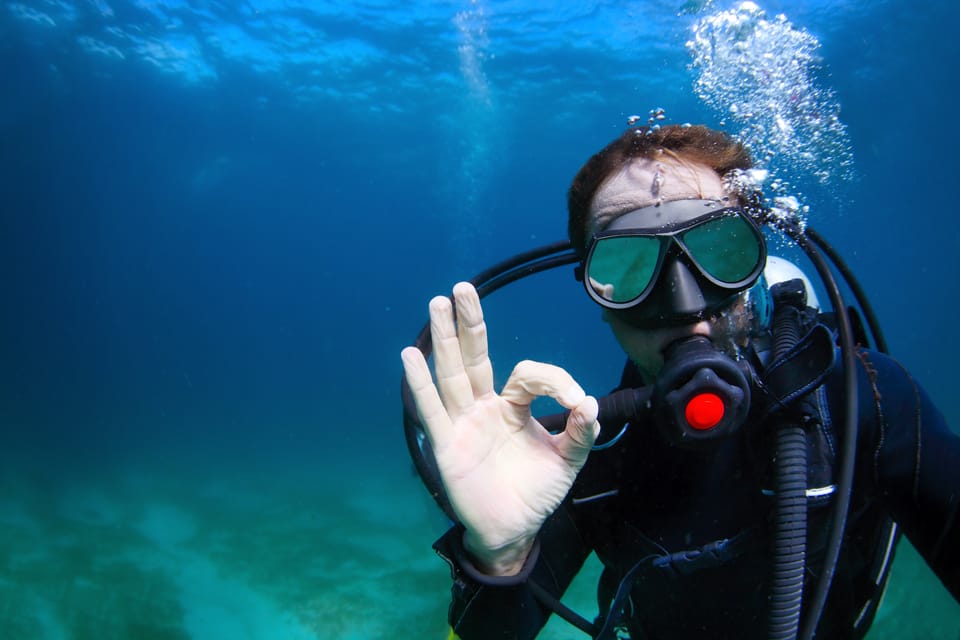
Table of Contents
3. Choosing and fitting your mask
4. Cleaning and mask maintenance
5. Prices
6. FAQ
As divers, we need to understand the equipment we use: understanding how our gear works and how to choose it properly helps us become better divers. Something as simple as a mask fitting or not, fogging up or not, will make the difference between an enjoyable dive and a bad experience.
In this article, I'll cover all there is to know about scuba diving masks: what they are, all the different types of masks that exist, how to fit a mask properly, etc... Then, I'll answer the most common mask-related questions.
If you're interested in learning more about the equipment scuba divers use, check out this article.
What is a mask?
The short answer is that a mask is what allows you to see underwater. The longer answer is that a mask provides an air space between your eyes and the water, allowing your eyes to focus and to see clearly!
A mask is made up of multiple parts:
- The lens is the clear part, usually made out of tempered glass, and is the part that actually allows us to see in the water! there are different types of lenses (I will give more details later on in this article).
- The seal is the part that is in contact with the skin and that seals the mask. The seal is usually made up of silicone or rubber.
- The frame holds the lens in place and provides the structure for the mask. The seal is usually attached to the frame.
- The strap fixes the mask on your head and makes sure it doesn't fall off. A strap is very often adjustable and can be made tighter or looser. If you want to personalize your mask, it is very common to attach a stylized strap to your mask.
Looking through the mask: Due to light being refracted from the water into the air space through your mask, objects being observed through your mask will appear slightly bigger and closer.
A general rule of thumb is that when looking through a mask, objects will appear:
- 33% (1/3rd) larger
- 25% (1/4th) closer
This is important to keep in mind when navigating through the underwater realm, as it is very common for divers to misjudge distances.
Types of masks
Although the purpose of a mask is pretty basic, there are a multitude of options to choose from, and they all differ slightly from one another.
Double lens
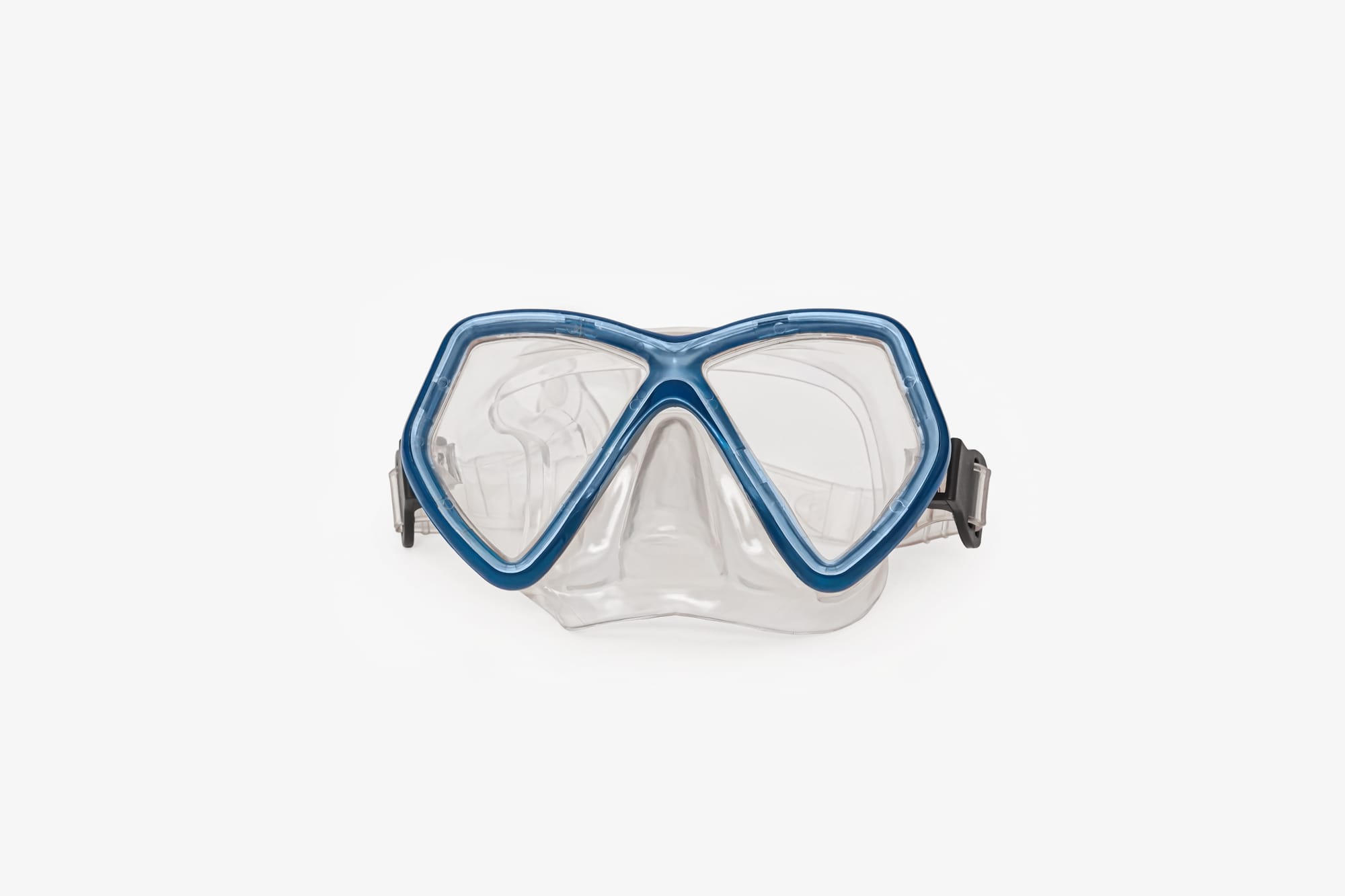
Double-lens masks are probably some of the most common types of masks you can find. Double-lens masks are defined as having two separate lenses.
They are commonly used for prescription lenses as it is easier to install for each individual lens. Double-lens masks are also easier to clear (meaning to get the water out if any leaks inside)!
Double-lens masks have slightly lower internal volume compared to single-lens masks, which makes it easier to equalize the airspace in them.
Single lens
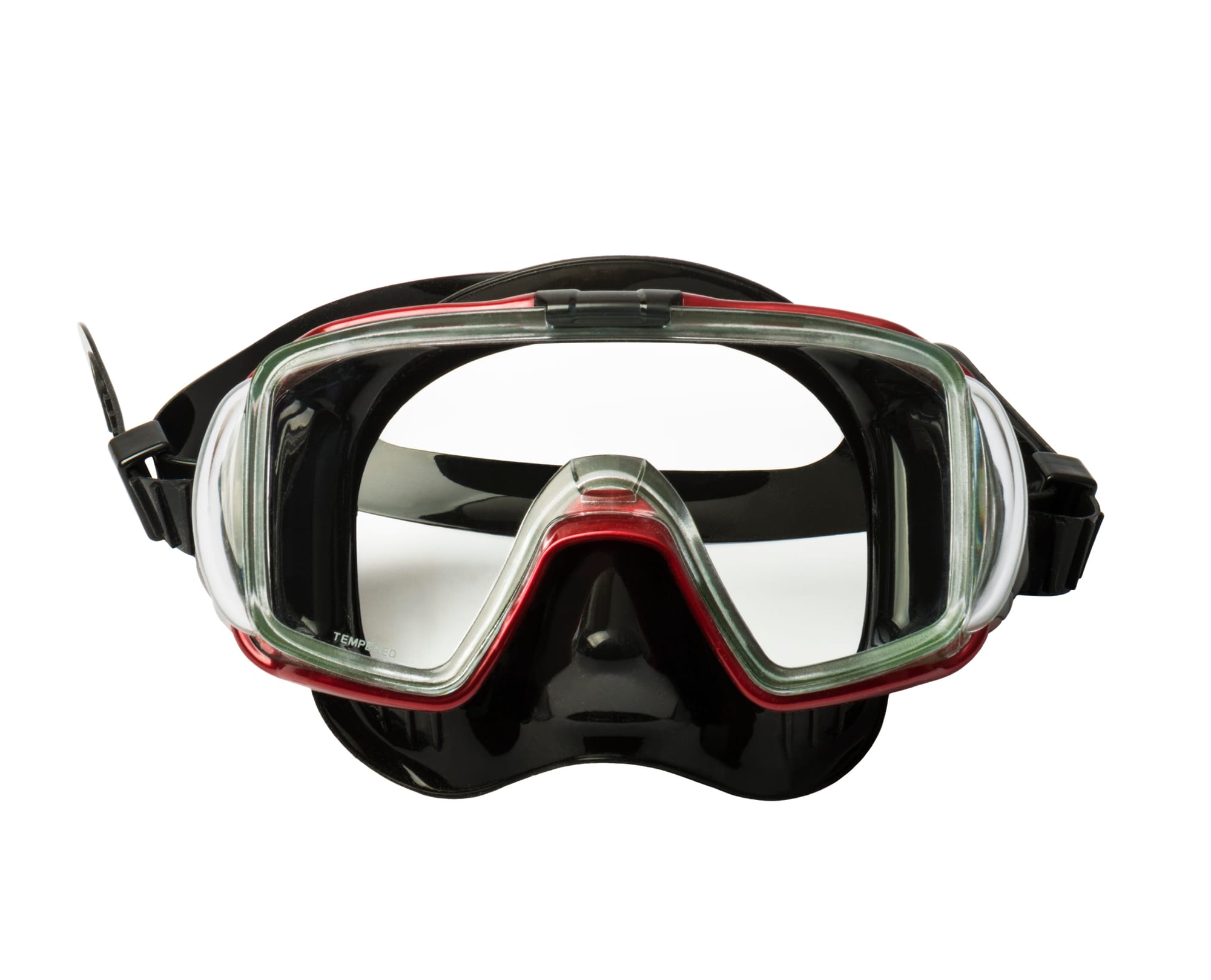
A single-lens mask is simply a mask with a single large lens attached to the frame, rather than two lenses. Single-lens masks usually give a wider field of view and are easier to defog.
They are used a lot by diving instructors/guides and underwater photographers, as having a large field of view is important for them. However, their larger size gives them a bulkier feel on the face and makes them slightly harder to equalize.
Pros and Cons of Single and Double Lens Masks
To make sure you pick the mask that is right for you, let's look at and recap the pros and cons of each:
Single lens
pros:
- Wider field of view
- Natural feeling
- Liked for their aesthetic
- Used by instructors, guides, and photographers
cons:
- Higher volume, harder to equalize
- Less compatibility with prescription lenses
- Bulkier on the face
Double lens
pros:
- Lower volume, easier to equalize
- Better compatibility with different types of lenses
- closer, easier fit on the face
- Used by freedivers, as they are easier to equalize
cons:
- restrictive field of view
- The middle frame part reduces the visibility slightly
Low volume
Low-volume masks are used to make mask equalizing easier: the air space in the mask gets compressed as the diver descends. To equalize it and prevent mask squeeze, the diver should exhale through their nose to "add" some air into their mask. Having a low-volume mask reduces the amount of air required to equalize it, as there is simply less volume to fill.
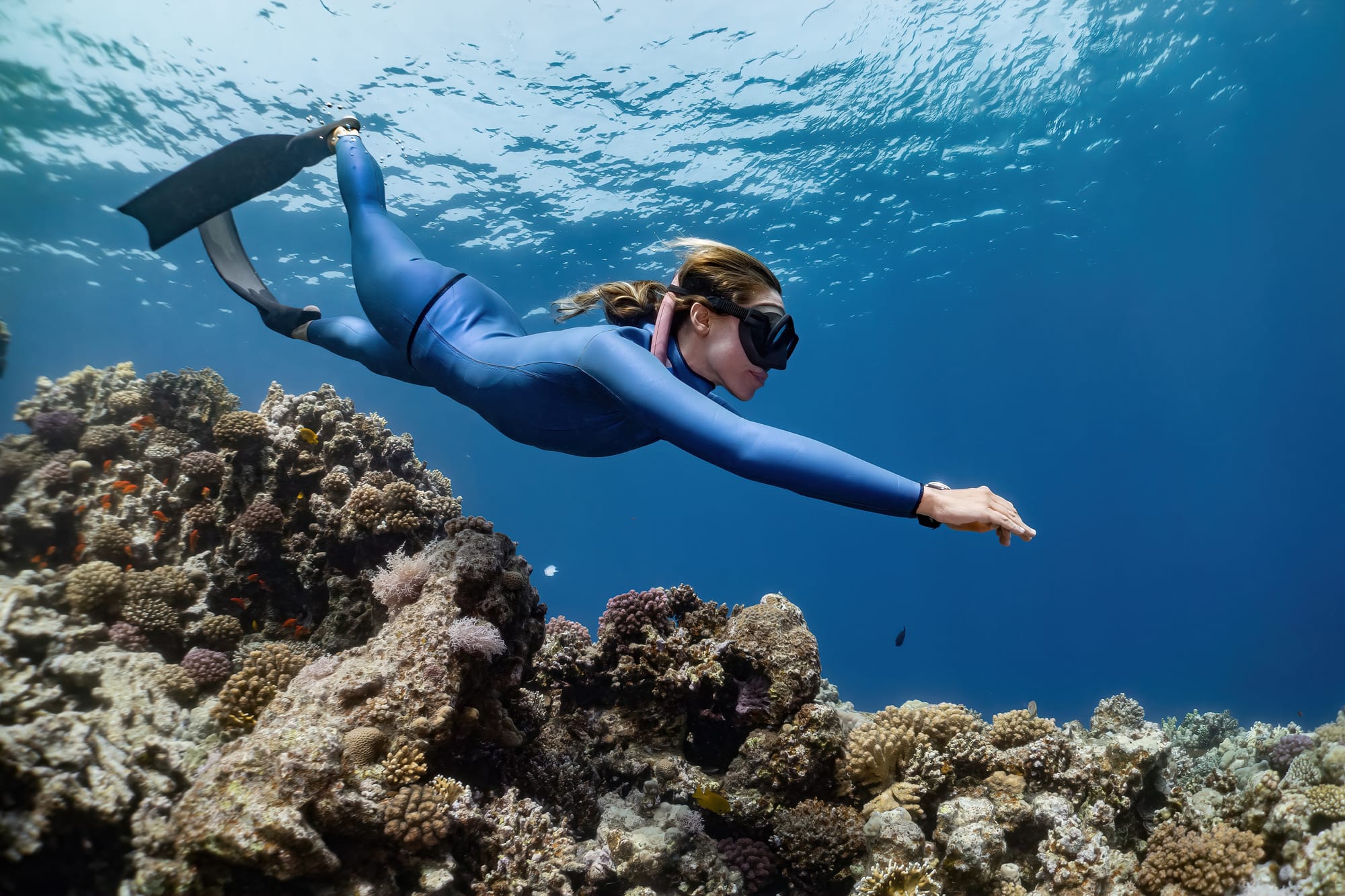
Low-volume masks are mainly used by freedivers, as they don't have a big supply of air, and they still need to equalize their mask: a small difference in mask volume can make a big difference, as the amount of air required to equalize the mask increases proportionally to the depth they go to. Some competitive freedivers decide to forgo masks completely!
The main drawback of low-volume masks is that the field of view/visibility is considerably reduced, as the mask has to be as small and as close to the face as possible!
Full-Face mask
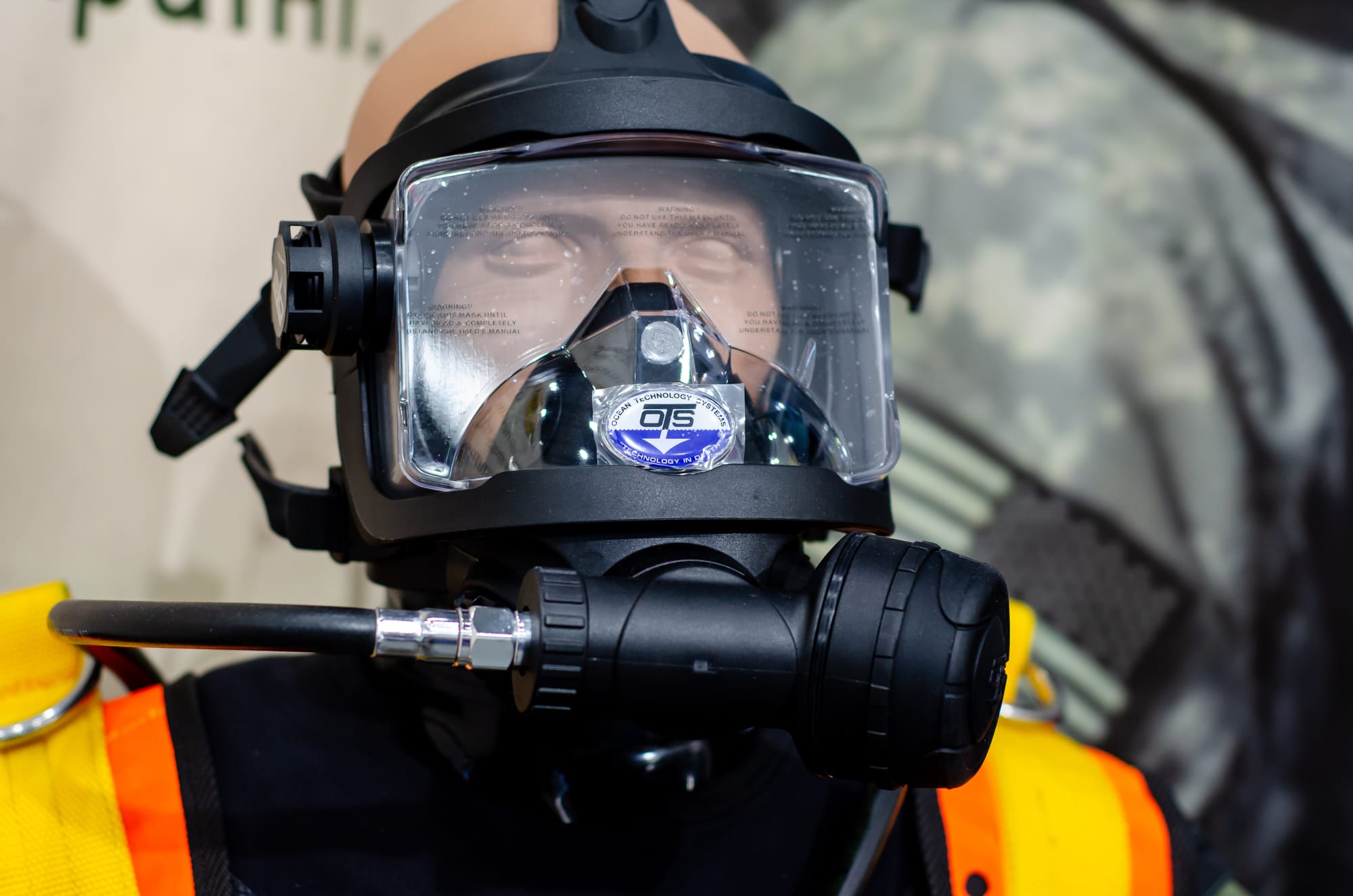
A full-face mask is a mask that covers your whole face! The mask is attached to a hose and usually has an integrated second-stage regulator, meaning you can breathe through the full-face mask. Some advanced models have integrated transmitters, allowing divers to talk and communicate with one another while submerged!
Full-face masks are used for situations requiring additional protection (such as diving in contaminated/unclean water) and communication. The main users of those masks are public safety divers, tasked with underwater rescue, recoveries, etc, and commercial divers.
Even though full-face masks don't have flexible nose pockets, it is still possible to equalize the ears as they provide to small seals you can press your nose into to equalize as if you were pinching it!
More options
On top of all the different types of masks that exist, there are multiple additional options to choose from:
Prescription lenses are installed in masks, allowing divers who usually wear glasses to see properly underwater.
tinted lenses allow the diver to protect their eyes from intense sunlight. Specialized tinted lenses may also add a bit of red hue to counteract the color loss due to depth.
Wide lenses are lenses that increase the peripheral field of view, allowing divers to see as much as possible underwater.
How to choose a diving mask that fits properly
So you made your choice, you found the perfect mask among all the choices presented to you. The next step is making sure your mask fits! There are not a lot of worse experiences in diving than a mask flooding all the time, forcing you to spend all the time clearing it, instead of enjoying your dive!
The basic idea behind fitting a mask is making sure the seal is in contact with your skin at all points, meaning there are no "open" points where the water could flood in. Before taking the mask out for a dive, the first time you should try to make it fit is before you even buy it. To do that, follow these steps:
- Tilt your head back, as if you were looking at the sky
- Put the mask on your face and leave it there, without attaching the strap to the back of your head.
- Have someone look around the mask, and look if there is a gap at any points between the mask seal and your face. If there is a big gap, you might have to choose a smaller fit.
- Once that first check is done, you can inhale through your nose, "vacuuming" the mask in place on your face, and start tilting your head forward. Make sure that the mask is staying in place.
If all of those previous steps are done properly, you should get an idea of whether the mask is going to fit you or not. If you're still unsure, ask your dive shops/centers if they have a mockup mask that they will allow you to take in the water to try and see if it fits!
Men with beards or mustaches might find that they have a harder time keeping their mask (even a properly fitted one) completely sealed. This is usually not an issue, but if you find yourself in this situation, adding a little bit of vaseline to your beard/mustache before putting on the mask may help you!
If you have long hair, make sure that any hair is out of the mask before starting your dive, as it might make it leak. Same if you are using a hoodie, make sure the mask seal is completely under your hoodie!
Taking care of and maintaining your mask
Taking proper care and maintaining your mask is essential, as it will prevent it from deteriorating over time. A properly maintained mask might last you your whole life!
Before the dive, make sure that when you set up your gear, you don't leave your mask anywhere it might get crushed (on the floor, too close to other people's dive kit, etc...) as the lens -although resistant- will shatter if they have a weight dropped on them! Any rough surfaces, such as rocks, should be avoided as they might leave permanent scratches on it! Make sure you treat it with some soap or spit in it before the dive to prevent any fogging!
After the dive, rinse your mask thoroughly with freshwater, especially after a dive in salty water, as salt crystal formations could damage the mask over time, and chlorine water as well! For any deep cleaning, use a soft toothbrush or a cloth/microfiber, particularly for the lenses!
To store the mask, we recommend avoiding direct sunlight and humid places. Ideally, once you finish your dive, clean your mask, let it dry, and once it's completely dry, put it back into its mask box. You can add some silica gel packets into the box to make sure any residual moisture doesn't cause trouble!
If there are any cracks on your frame or lenses, you might have to change the mask and buy a new one. However, if there are any issues with the mask strap, it can be changed easily!
Prices of diving masks
The prices of masks may vary depending on what you're looking for! An entry-level mask may cost as little as 40€, while a professional one will set you back around 80€. The most expensive masks may be as high as 200€ (excluding corrective lenses).
When choosing a mask, it is more important to look at comfort rather than its price tag. A mask is very often the first thing a new diver is going to buy. Having a quality, properly fitted mask can be the difference between a good and a bad experience
FAQ
Q: Can you breathe through your mask?
A: If you have a regular diving mask (i.e., not a specialized full-face mask), you will not be able to breathe through your nose; you will need to breathe through the regulator with your mouth.
Q: Why do masks have nose pockets?
A: The nose pockets in the mask are useful for equalizing, as they are soft pockets. Masks having nose pockets allow you to equalise the airspace in your mask by exhaling through your nose during the descent.
Q: Can you wear a mask if you have a beard?
A: Having a beard is not an issue while wearing a mask. It might cause it to leak a little bit more, but if you find that to be an issue, applying a little bit of vaseline on your beard helps seal the mask. The same is true for mustaches.
Q: How to deal with a mask squeeze?
A: If you are experiencing a mask squeeze, it is because the outer pressure of the mask is increasing faster than its inner pressure. To equalize the inner air space of the mask and deal with the mask squeeze, you simply need to exhale through your nose, as that will "fill up the mask with more air" and counteract the outer pressure.
Q: Do I need a snorkel with my mask?
A: A snorkel is always recommended as it can help you breathe on the surface if the sea is choppy, however, it isn't mandatory for diving.
Q: How to stop my mask from fogging up?
A: If your mask fogs up often, you might have to put toothpaste, soap, or even spit in it before the dive starts! Some more advanced techniques include burning the lens (although only experienced divers should try that, as they risk damaging the mask if done incorrectly). To read about it in more detail, read this article focused on preventing mask fog.
Q: How to clear my mask?
A: Clearing a mask is the skill you learn if water gets inside it, and you want to empty it during the dive. To clear the mask properly, press your index and middle fingers with both hands on the top part of the frame (not the seal, but the frame) to keep the top part of the mask in place on your face. Then, to prevent water from coming into your nose, position your head down (look down), and start exhaling through your nose; as you're exhaling, slowly start looking up to the surface, still while exhaling. That will clear your mask of any water while ensuring it doesn't get in your nose!
